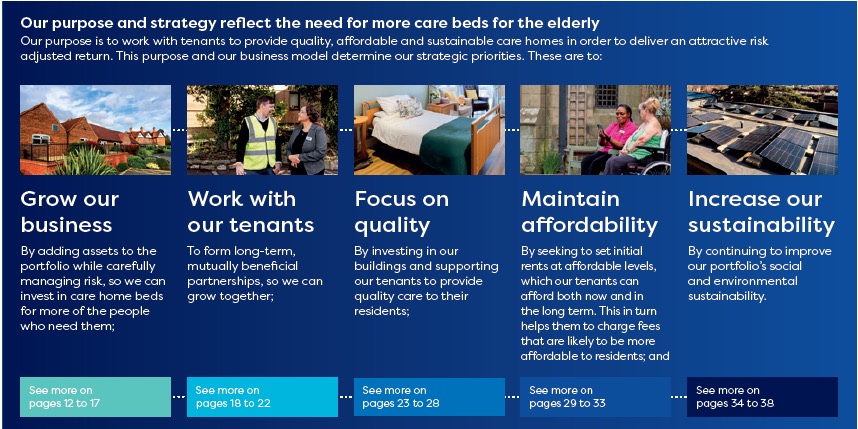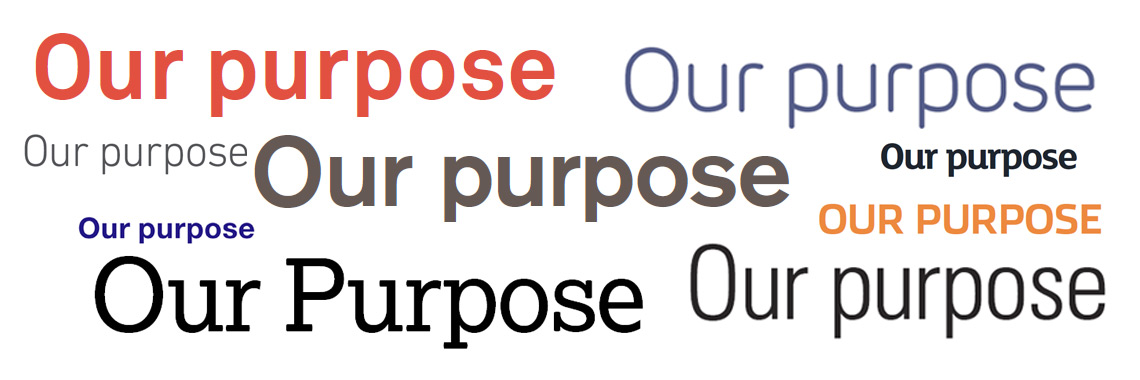How we helped our client to rethink its annual report, to create a clear and compelling narrative for shareholders.
Your annual report should ‘tell your story’
Since it first produced guidance on writing a strategic report in 2014, the Financial Reporting Council has been encouraging companies to use the annual report to tell their stories.
The current guidance says that it wants to:
“encourage entities to experiment and be innovative in the drafting of their annual reports, presenting narrative information in a way that enables them to best ‘tell their story’ while remaining within the regulatory framework”
The introduction to the guidance also says that:
“Placement is a key theme in the Guidance with a view to providing entities with the building blocks to be innovative in the location of information whilst working within the regulatory framework.”
From a communication perspective, this makes sense. Companies should be explaining clearly:
• what they do (starting with their purpose);
• what the opportunity is (their markets);
• how they’re taking advantage of that opportunity, including the strengths that make them effective competitors (business model and strategy);
• the progress they’re making (performance reviews, KPIs, ESG); and
• what could knock them off course (principal risks).
Fundamentally, that’s the company’s story. At its heart is the answer to every investor’s question:
Should I own this stock?
The growth in disclosure is drowning out narrative
The growth in mandatory annual report disclosures is relentless. TCFD, for example, has added pages of dense and detailed text, with the 2022 climate reporting regulations removing most of the Listing Rules’ flexibility to publish these disclosures outside the annual report. If the government endorses UK sustainability reporting standards, we can expect a raft of new requirements on top of this.
With more and more content crammed into reports every year, how are companies supposed to tell their story and meet their reporting obligations?
They have to rethink their annual reports.
A new approach to Impact Healthcare’s reporting
Despite the value of having a compelling story, most companies stick to the tried and trusted when it comes to their annual report structure. One client that was determined to do it differently was Impact Healthcare REIT (since renamed Care REIT), which owns a portfolio of care homes across the UK.
The client’s idea was to structure the report around its strategic priorities, which all flowed directly from its purpose statement:

Our job was to turn this idea into reality.
Having set the scene with the purpose statement and strategic priorities, we:
• evidenced the opportunity, showing the demographic trends that are driving demand for care beds as the population ages, and the chronic lack of new supply; and
• showed how the company was addressing that opportunity (and delivering the risk-adjusted returns promised by its purpose) through its business model.
We then wrote five core sections for the strategic report, each focused on one strategic priority. In each section, we set out:
• the strategic choices the company had made;
• what the company had achieved to date (for example, the current shape of its portfolio);
• the actions the company took during the year;
• the KPIs the board used to measure its progress;
• how the company engaged with the stakeholders who were most relevant to that strategic objective;
• the board’s key decisions in the year relating to that objective; and
• case studies to bring the company’s progress to life.
As well as making the report easier and more interesting to read, this structure demonstrated how the directors had performed their duties under s172, in a truly integrated way.
We then rounded out the strategic report with the principal risks and a briefer than usual financial review, given much of the detail had been covered in the strategic priority sections.
One of the client’s goals was to avoid repetition as much as possible, which included having no separate highlights section or a traditional Chair’s statement. To provide a high-level summary of the report, we created a ‘year in brief’ to go up front. This combined the charts and key messages that would usually go in the highlights with the broader overview of a Chair’s statement, in one easily digestible section.
An ‘action’ focused governance report
When it came to the governance reports, our remit was to focus on what investors want to know: what have the board and its committees actually done during the year? The Chair’s introduction to governance then became a ‘corporate governance review’, summarising the board’s key discussions with links back to the major decisions already discussed in the strategic report.
Anything that didn’t need to be said, we cut. For example, we decided not to explain the roles and responsibilities of each committee, since this should be clear from the content of their reports and their terms of reference were available on the website for those who wanted the detail.
Being mindful of disclosures without letting them get in the way
While the report had to be compliant, we didn’t want to do let large blocks of mandatory detail bring the narrative to a grinding halt. This meant the TCFD section went into an appendix at the back of the report, with a cross-reference from the sustainability section and its own listing in the table of contents. This allowed the company to say what it wanted to about its climate and energy efficiency goals in the strategic report, while still meeting its reporting obligations.
In corporate governance, the overview of the company’s risk and internal controls framework also went in the back of the report, along with the tables showing how the company had complied with the AIC Code. Any required disclosures we hadn’t directly picked up in the Chair’s introduction or the committee reports, we included in the directors’ report.
An industry recognised achievement
We were delighted that the report won ‘Best Report and Accounts – Alternative’ at the Association of Investment Companies’ Shareholder Communication Awards 2024, with the judges commenting that:
“The judges praised the report’s accessible approach and effective design. They found the report visually appealing and enjoyable to read.”
Find out more
Read more about our annual report copywriting service or contact us to discuss your project.





